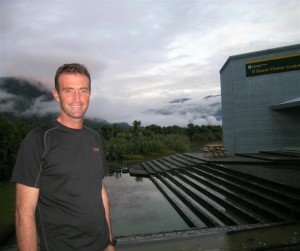Nearly 20 research projects will split $7 million of taxpayer funding over the next three years as scientists take on board lessons of the Christchurch earthquakes and move to mitigate other natural hazards, such as tsunami on the East Coast, a big quake hitting the capital, and volcanic eruptions in Taranaki.

In one project, engineers from the Opus consultancy will use Wellington as a case study for “acceptable” levels of seismic risk in the nation’s older buildings. The capital has 435 buildings with unreinforced masonry — 166 of which are heritage buildings — and the Wellington City Council says the local economy would take a $37 billion hit if it experienced an event like the Christchurch earthquake.
The $7 m (excluding GST) has been allocated by the Natural Hazards Research Platform — a collaboration set up by the Government in 2009 to provide longer-term funding to make the nation more resilient to natural hazards such as earthquakes and floods — which is hosted by GNS Science, with the National Institute of Water and Atmospheric Research (NIWA) as co-anchor. The cash was split, with $4 million (ex. GST) available over 33 months for natural hazards’ and $3 million over 39 months “lessons learned from Christchurch”.
Both pools of money are separate from the Ministry of Science and Innovation’s $59.5m 2012 investment round — which is still underway — and the research topics are also separate to those in the wider funding programme. The studies will canvass geological and weather-related hazards, societal resilience in the face of risk, and engineering buildings and other structures for resilience.
Dr Ursula Cochran (GNS) is leading research on the history of past major earthquakes on the Alpine fault, and Dr Bruce Hayward (Geomarine Research) is probing major earthquakes in the Hikurangi subduction margin of eastern North Island, which could produce the kind of impacts seen in last year’s Tohoku earthquake and tsunami in Japan.
There are two other projects on tsunami hazard and risk – a GNS/Auckland University look at tsunami impacts on the nation’s ports, and a NIWA/GNS project on the likelihood of undersea landslides triggering tsunami which would allow no more than a few minutes warning.
Maori settlers were present in NZ for major eruptions such as Rangitoto and Tawawera and Dr Jonathan Proctor of Massey University is documenting Matauranga Maori stories of volcanic hazard.
Dr David Rhoades, of GNS, is working on improving methods for estimating further earthquake activity in a region following one or more large shakes. Another researcher there, Dr John Haines, will develop new methods for assessing future earthquake and volcanic hazard by interpreting the data coming from the increasingly dense network of high resolution GPS receivers in the GeoNet array.
Two universities will lead engineering projects, with Canterbury University researchers seeking methods to identify residual capacity and repair options in commercial buildings following earthquakes, and Auckland University will assess specific earthquake-related demand for commercial steel frame construction, and the repair options available after damage.
NIWA, GNS and engineering consultants Opus are examining windflows over landscapes and building and reassessing wind-engineering guidance documents.
Dr Rob Bell, of NIWA, will assess the hazards of storm tides in estuaries, where storm surges can combine with king tides and inland floodwaters surging to the sea.
In the second major part of the funding announcement, lessons to be learned from the Christchurch quake, researchers will develop guidelines for future construction or retro-fitting building damaged by a big shake. An Auckland University team led by Dr Jason Ingham will develop guidelines for effective retrofits of heritage buildings made of unreinforced masonry, and Dr Richard Henry will lead another team from that university looking at the issues that Christchurch’s quakes have raised over reinforced concrete walls in commercial buildings.
An Opus-led team will consider acceptable levels of seismic risk in the nation’s older buildings, basing its case study in the capital.
Two big projects will assess economic impacts of the Christchurch quake.
Dr Levi Timar at GNS and Motu economic consultancy will analyse a Canterbury case study and Massey University will use economic modelling software that worked in the aftermath of the Christchurch quakes to forecast the economic losses associated with major volcanic eruption at Mt Egmont-Taranaki.
Dr Anna Kaiser from GNS and Dr Brendon Bradley from Canterbury University will analyse huge amounts of data from Canterbury earthquake recording stations to seek reasons for high levels of shaking and damage. They will dis-entangle contributions from the earthquake characteristics at source, the path effects from 8km-10km depth to the surface as energy waves travelled through complex geological layers, and weak soil effects in the top 20m of the ground.
Dr Simon Cox from GNS will investigate whether liquefaction-induced damage in Christchurch was made worse by leakage from the huge artesian water aquifers beneath the city.
Dr Philip Barnes from NIWA will use the data collected last year in Pegasus Bay to examine characteristics of the fault structure in the region and improve the understanding of the causes and patterns of recent earthquakes.